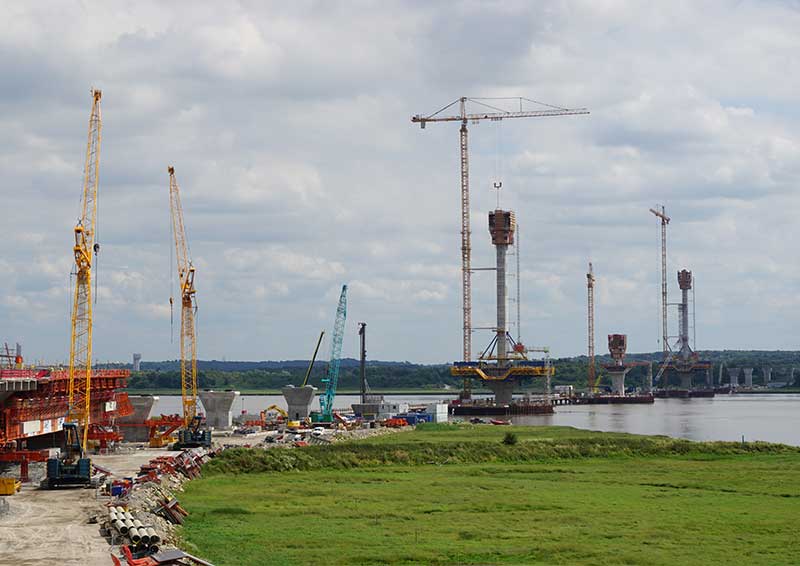PFIs and adjudication
As of 2017, the UK government's Private Finance Initiative (PFI) is now 25 years old. Introduced to change the way the public sector procures infrastructure, it has certainly achieved that aim.
PFI projects are necessarily complex in their contractual structure and the number of parties involved tends to be greater than in traditional procurement. That in turn can lead to a greater number of disputes than before and of greater complexity.
The growth in PFI activity in the 1990s and 2000s was in parallel to the developments in statutory provisions for adjudication through the HGCRA. PFI agreements are excluded from the provisions of the act through accompanying legislation, but that exclusion does not apply entirely to PFI subcontracts which are construction contracts under the act.
S.113 of the act prohibits pay-when-paid clauses which leads to an inability to fully enforce equivalent project relief provisions (ways of enforcing back-to-back risk transfer down the supply chain) by PFI project companies.
This was the situation in Midland Expressway. Project companies are typically thinly capitalised and prolonged disputes involving subcontractors and potentially the public sector authority can cause significant cash flow difficulties. Subsequent contracts legislation in 2011 eased this burden slightly but the ban on pay-when-paid remains.
These characteristics point to the usefulness of adjudication as a relatively quick form of dispute resolution in the PFI market. The joining of related disputes is a helpful feature as most disputes involve more than two parties and more than one contract.
Despite the S.113 exemption, PFI project agreements almost always contain contractual adjudication provisions for dispute resolution which tend to be closely followed by those drafting subcontracts, for example using the same panel(s) of adjudicators.
Better value from existing private finance initiatives:
The UK government's austerity measures brought in after the credit crunch led public authorities to seek better value from existing PFI agreements and this in turn has led to a significant rise in disputes under PFI contracts between authorities, project companies and subcontractors.
The factual matrix of the Portsmouth City Council highways case, while one of only a very small number to reach the courts, was typical of many other PFI projects.
Most public bodies, and probably their contractual partners, prefer to avoid the sometimes unflattering exposure brought by litigation so once again adjudication is a natural route to take given its confidentiality.
The PFI market is now mature as are many of the assets procured through its use. Lifecycle expenditure is an important consideration for project companies and their asset maintenance subcontractors.
Disputes between private sector parties about the responsibilities for asset maintenance and asset replacement are now common and are now being seen frequently in adjudications. Also common at present are disputes brought by public authorities for building defects.
The long-term nature of PFI agreements (typically at least 25 years), means that the market isn't going to disappear despite the slowness of government to develop replacement models for PFI-style projects. Whether the current propensity to disputes will continue, only time will tell.
This article was originally published here on 8 March 2017 by ICE. It was written by Patrick Waterhouse - a construction adjudicator and is on ICE's panel of adjudicators and panel of conciliators/mediators.
--The Institution of Civil Engineers
[edit] Related articles on Designing Buildings Wiki
- Articles by ICE on Designing Buildings Wiki.
- Adjudication.
- Adjudicators and bias.
- Causes of construction disputes.
- Concession agreement.
- Equivalent project relief provisions.
- Housing Grants, Construction and Regeneration Act HGRA.
- Midland Expressway Ltd v Carillion Construction Ltd & Others.
- Private finance initiative.
Featured articles and news
RTPI leader to become new CIOB Chief Executive Officer
Dr Victoria Hills MRTPI, FICE to take over after Caroline Gumble’s departure.
Social and affordable housing, a long term plan for delivery
The “Delivering a Decade of Renewal for Social and Affordable Housing” strategy sets out future path.
A change to adoptive architecture
Effects of global weather warming on architectural detailing, material choice and human interaction.
The proposed publicly owned and backed subsidiary of Homes England, to facilitate new homes.
How big is the problem and what can we do to mitigate the effects?
Overheating guidance and tools for building designers
A number of cool guides to help with the heat.
The UK's Modern Industrial Strategy: A 10 year plan
Previous consultation criticism, current key elements and general support with some persisting reservations.
Building Safety Regulator reforms
New roles, new staff and a new fast track service pave the way for a single construction regulator.
Architectural Technologist CPDs and Communications
CIAT CPD… and how you can do it!
Cooling centres and cool spaces
Managing extreme heat in cities by directing the public to places for heat stress relief and water sources.
Winter gardens: A brief history and warm variations
Extending the season with glass in different forms and terms.
Restoring Great Yarmouth's Winter Gardens
Transforming one of the least sustainable constructions imaginable.
Construction Skills Mission Board launch sector drive
Newly formed government and industry collaboration set strategy for recruiting an additional 100,000 construction workers a year.
New Architects Code comes into effect in September 2025
ARB Architects Code of Conduct and Practice available with ongoing consultation regarding guidance.
Welsh Skills Body (Medr) launches ambitious plan
The new skills body brings together funding and regulation of tertiary education and research for the devolved nation.
Paul Gandy FCIOB announced as next CIOB President
Former Tilbury Douglas CEO takes helm.
UK Infrastructure: A 10 Year Strategy. In brief with reactions
With the National Infrastructure and Service Transformation Authority (NISTA).
























